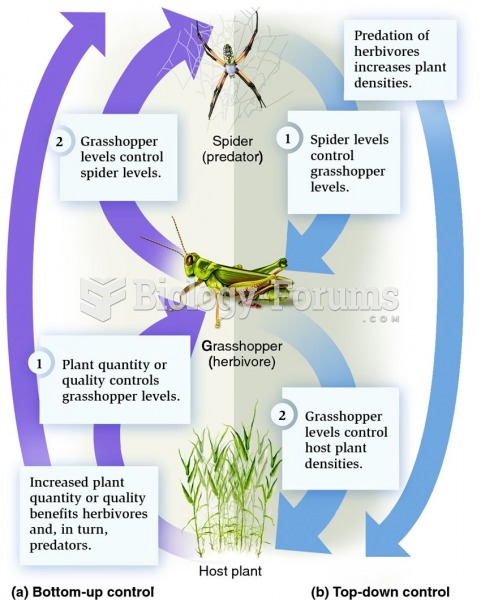|
|
|
Studies show that systolic blood pressure can be significantly lowered by taking statins. In fact, the higher the patient's baseline blood pressure, the greater the effect of statins on his or her blood pressure.
The Babylonians wrote numbers in a system that used 60 as the base value rather than the number 10. They did not have a symbol for "zero."
The Centers for Disease Control and Prevention (CDC) was originally known as the Communicable Disease Center, which was formed to fight malaria. It was originally headquartered in Atlanta, Georgia, since the Southern states faced the worst threat from malaria.
To maintain good kidney function, you should drink at least 3 quarts of water daily. Water dilutes urine and helps prevent concentrations of salts and minerals that can lead to kidney stone formation. Chronic dehydration is a major contributor to the development of kidney stones.
After a vasectomy, it takes about 12 ejaculations to clear out sperm that were already beyond the blocked area.
 Ears pulled back flat against the head with teeth bared and white of the eye showing, indicating ang
Ears pulled back flat against the head with teeth bared and white of the eye showing, indicating ang
 The nurse needs to inform the patient with impaired vision when a touch is to occur and ask permissi
The nurse needs to inform the patient with impaired vision when a touch is to occur and ask permissi
 The end of a typical line wrench, which shows that it is capable of grasping most of the head of ...
The end of a typical line wrench, which shows that it is capable of grasping most of the head of ...




